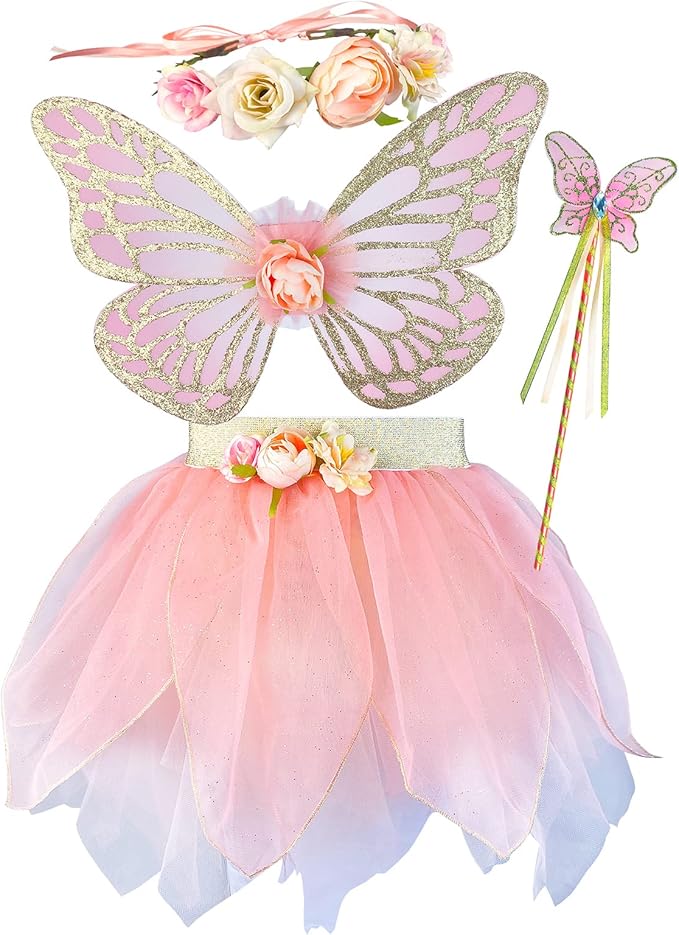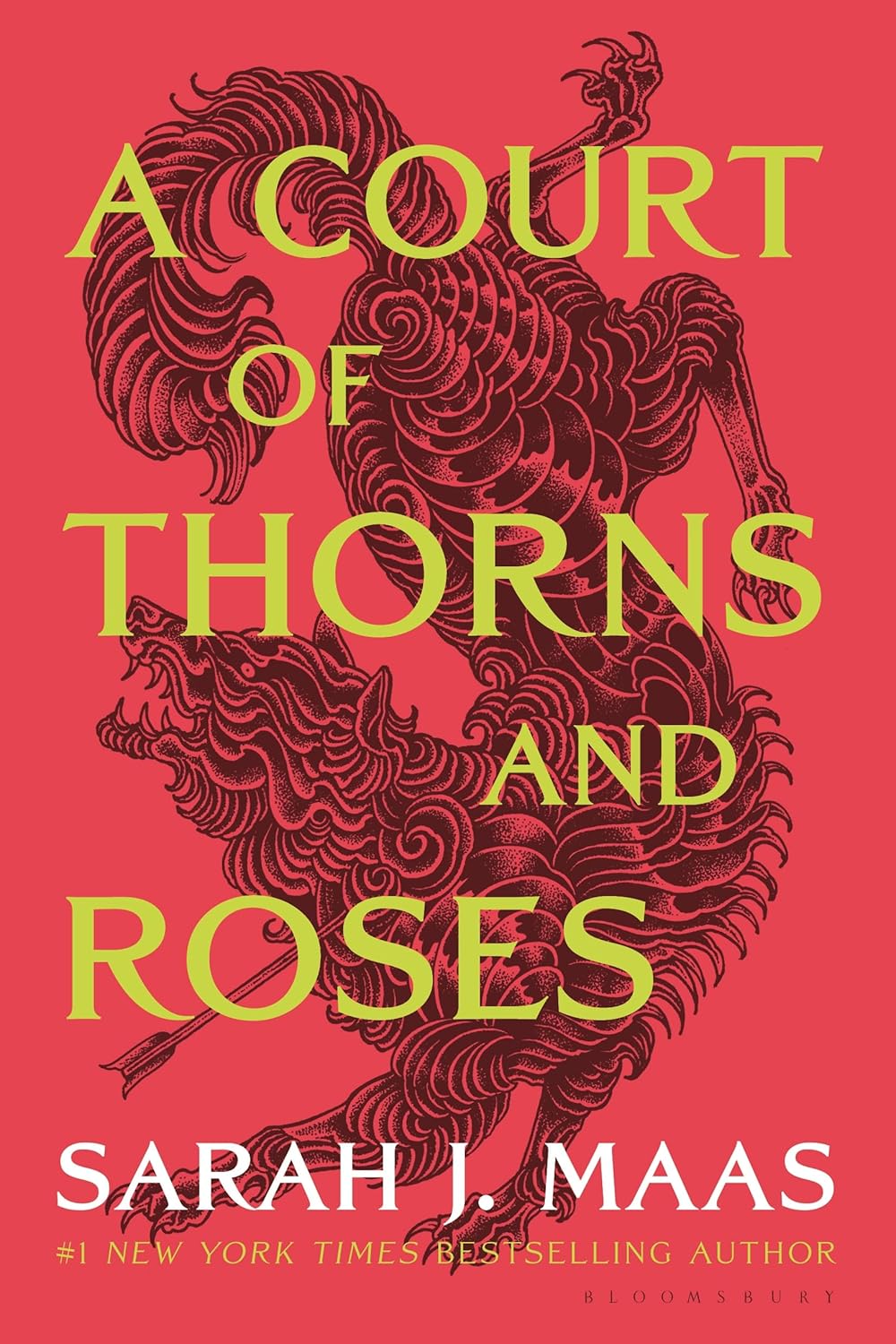- Home
- Fairy Blog
- Fairy Cakes
- Fairy Quotes
- Safety Dance
- The Flower Fairies Books
- What is a Fairy?
- Are Fairies Real?
- Elemental Fairies
- Faeries
- What are the Fae?
- Fae Fantasy Books
- Fairy History
- Origin of Fairies
- Fairies in Folklore
- Pixies
- Pixie Fairy Differences
- Gothic Fairies
- Tooth Fairy
- Fairy Festivals
- Fairy Gardens
- Fairy Garden Accessories
- Fairy Forests
- Fairy Poems
- Fairy Tales
- Fairy Tale Origins
- Classic Fairy Tales
- 24 Fairy Tales
- Fairy Tales around the World
- About Fantasy Creatures
- Dragons
- Dwarves
- Elves
- Gnomes
- Leprechauns
- Mermaids
- Unicorns
- Fairy Face Painting
- Fairy Costumes for Kids
- Free Fairy Art
- Fairy Coloring Pages
- Fairy Crafts For Kids
- Chinese Dragon Art
- How to Draw a Dragon
- Chinese Dragon Drawing
- Dragon Coloring Pages
- Fairy Tattoo Ideas
- About Us
- Contact Us
- Disclaimer
- Privacy Policy
Mermaids and Sirens Compared
Mermaids and Sirens compared.
The differences and similarities between mermaids and sirens have been talked about since humanity learned how to write. But how and when did their stories and the possibility of their existence spring up? Where did they originate? Did they come from sailors’ tales of sightings, or were they known even before that? Are they manatees, dugongs, or something more? Only one way to find out. Read on!
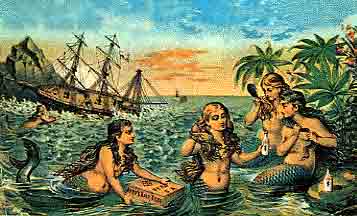
Adorable Fairy Costume Set!
Includes a fairy tutu, wing, wand and flower halo - perfect for parties, dress-up play, pageants and so on.
CLICK HERE for the best price!
Mermaids and Sirens Compared
Dugongs (Dugong dugong) are closely related to manatees and are the fourth species under the order sirenia. Unlike manatees, dugongs have a fluked tail, similar to a whale’s, and a large snout with an upper lip that protrudes over their mouth and bristles instead of whiskers.
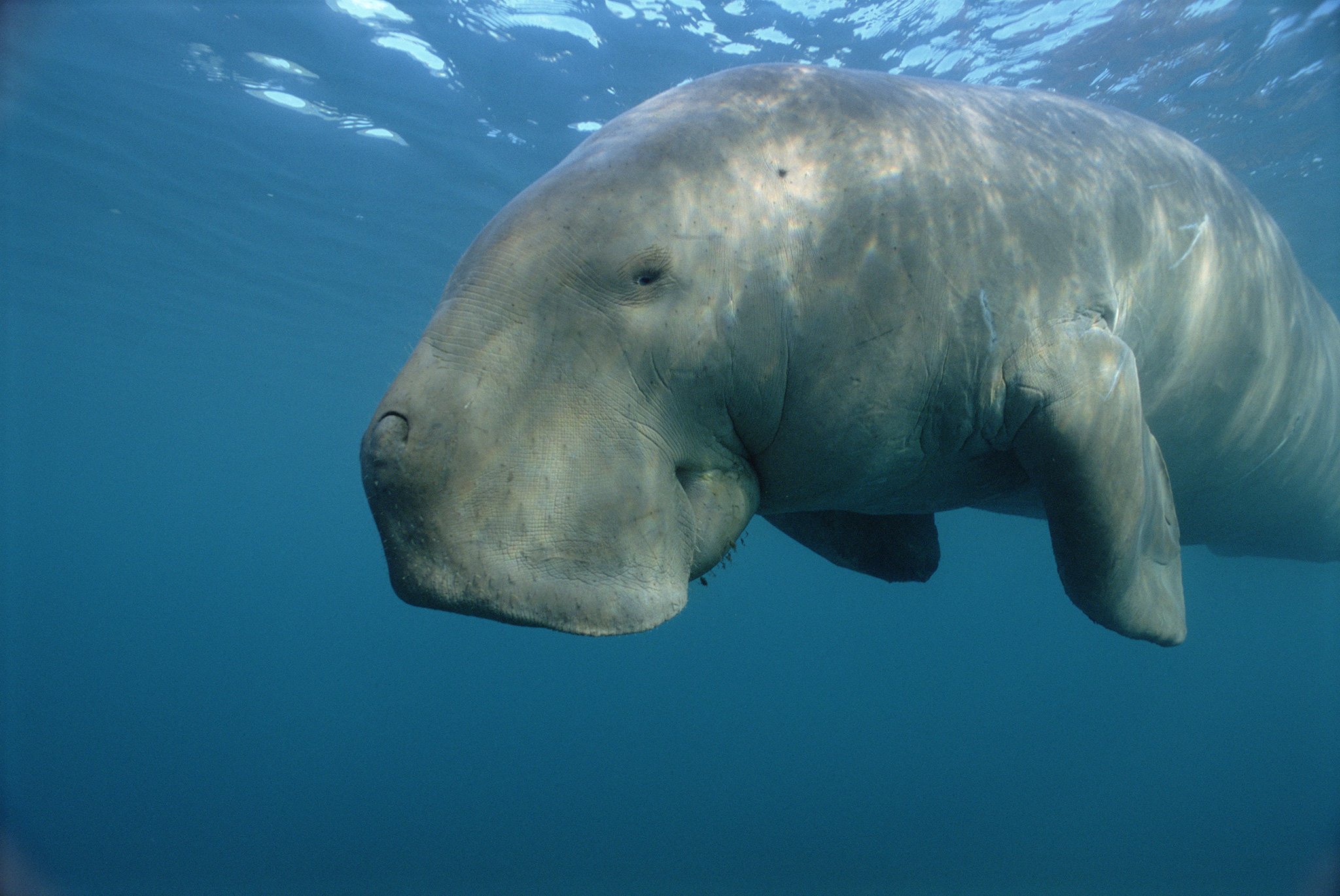 A Dugong
A DugongThe first known mermaid stories come from ancient Mesopotamia, where the goddess Atargatis was depicted as a fish-tailed woman. Mermaids also appear in Greek mythology, with sirens being creatures that lured sailors to their deaths with their enchanting songs.
The belief in mermaids persisted into the early modern period, with sailors reporting sightings of mermaids during their voyages.
Christopher Columbus, for example, claimed to have seen mermaids during his journey to the New World in 1492.
Mermaids and Sirens Compared
Mermaids and sirens compared, are two mythical creatures of the sea that have captured human imagination for centuries. Their allure, shrouded in mystery and danger, has lent them to various interpretations in folklore and literature. Yet despite their similarities, mermaids and sirens have unique attributes and distinct origins, each embodying different symbolic connotations.
Mermaids
Mermaids, as half-human, half-fish beings, are a universal symbol found in folklore across the world. The term "mermaid" is derived from the Old English words "mere" (sea) and "maid" (girl or young woman).
The concept of mermaids dates back to ancient times. One of the earliest known mermaid-like figures is the ancient Syrian goddess Atargatis, who was depicted as a fish-tailed woman and was associated with fertility and well-being. From the sirenia of ancient Crete to the Selkies of Scotland and Ireland, mermaid-esque figures have figured prominently in global mythology.
Typically, mermaids are portrayed with the upper body of a human and the lower body of a fish. Renowned for their beauty and enchanting songs, they are inexorably linked with the sea, symbolizing both its captivating allure and its treacherous unpredictability. They often play a benign, even protective role, aiding mariners in distress or bestowing boons. Yet, in some tales, mermaids lure sailors to their doom, much like the Sirens of Greek mythology, embodying the hazardous aspects of the sea.
Have you read our page 'Are Mermaids Real?'
Sirens
Mermaids and Sirens Compared - Unlike mermaids, sirens originate strictly from Greek mythology. Initially, they were not directly linked to the sea, but were considered perilous bird-women who lived in meadows. These creatures, with the heads of beautiful women and bodies of birds, possessed alluring voices that spelled doom for anyone entranced by their songs.
The portrayal of sirens evolved over time, influenced by cultural interaction and artistic interpretation. In later Greek and Roman art, they began to be depicted as fish-tailed women, closely resembling the mermaids we know today. This transformation contributed significantly to the conflation of the two mythological beings.
Yet, regardless of their physical form, the primary characteristic of sirens remained their enchanting, deadly song. Their most famous narrative comes from Homer's Odyssey, where the hero Odysseus, forewarned of the sirens' lethal charm, orders his men to stuff their ears with beeswax. He himself, yearning to hear the sirens' song yet mindful of its perils, had his crew tie him to the ship's mast, ensuring he could not succumb to their seductive lure.
Mermaids have been enduring symbols in myth and culture for thousands of years. They continue to have a very visible role in contemporary society in advertising, movies and our culture in general.
Each year The Coney Island Sea Creature Parade occurs the first Saturday after the summer solstice around the third week of June, hundreds of these sea nymhs, Neptunes, mer-men and hundred of thousands of spectators descend upon Coney Island, New York to celebrate the beginning of Summer and the official opening of the Atlantic Ocean. What is this powerful attraction that is so compelling? Why do five hundred thousand people turn out for this Parade?
Mermaids and Sirens Compared
Despite their shared association with the sea, seduction, and danger, mermaids and sirens hold distinct symbolic places in mythology. Sirens, irrespective of their later mermaid-like depictions, are consistently portrayed as perilous entities symbolizing temptation's destructive power. Their narrative is a cautionary tale underscoring the fatal consequences of succumbing to persuasive allure.
Mermaids, on the other hand, exhibit a broader range of characteristics. They can embody danger and seduction, yet many mermaid tales cast them as benevolent, sympathetic, or even tragically heroic figures. They often represent the mystery and beauty of the sea, encapsulating our complex emotions towards the ocean—simultaneously a source of fascination and fear.
Mermaid legends
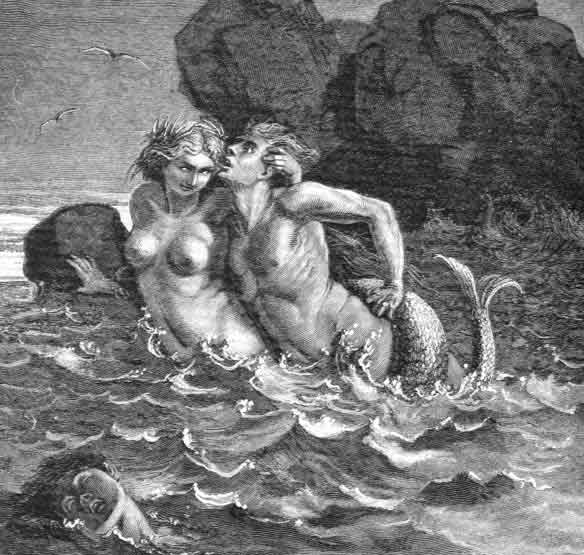
From the Diary of Christopher Columbus January 9, 1493:
"The day before, when the Admiral was going to the Rio del Oro, he said he saw three real mermaids who came quite high out of the water but were not as pretty as they are depicted, for somehow in the face they look like men. He said that he saw some in Guinea on the coast of Manegueta."
Almost all cultures from all over the world are know to have similar legendary creatures that live in the sea. The term was sometimes used interchangeable with the term Siren, in fact, some languages use the same word for both creatures.
In legends these creatures would serenade sailors and enchant them. This would distract the sailors from their work and sometimes cause them to walk off the deck or cause shipwrecks. Other stories would have them squeeze the life out of drowning men while trying to rescue them. They are also said to take men down to their underwater kingdoms and teach them to live in the sea..
In Hans Christian Andersen's story it is said that they forget that humans cannot breathe underwater, while others say they drown men out of spite. The Sirens of Greek mythology are sometimes portrayed in later folklore as creatures very similar.
Other related types of mythical or legendary creature are water fairies (e.g. various water nymphs) and selkies, animals that can transform themselves from seals to humans. Prior to the mid 19th century, mariners referred to Manatee and Dugongs as these creatures.
Despite these generalizations, it's important to remember that these interpretations can vary based on the culture, time period, or specific narrative context. As products of human imagination, mermaids and sirens take on an array of meanings, embodying various facets of human experience and emotions. Both continue to intrigue us, reflecting humanity's profound curiosity about the natural world, its mysteries, and the unknown. As long as the sea continues to inspire awe and wonder, mermaids and sirens will undoubtedly remain enduring symbols of our collective human imagination.
You may be interested in our page 'Are Mermaids Real?'
Book of the Month
The Best Selling Fae Fantasy Book! A great gift!
CLICK HERE for more information and best price!
Recent Articles
-
Fairy Costumes for Kids
Dec 30, 25 11:27 AM
Find the perfect fairy costume for you little ones! We have researched the best fairy costume options available on Amazon covering all budgets.. -
Christmas Angel Story of boy meets Angel "The Magic Letter" Dean Kiser
Dec 30, 25 09:00 AM
A Christmas Angel Story about an eleven year old orphan boy that meets an Angel. "The Magic Letter" by Dean Kiser -
Fae Fantasy Books - where love can be both thrilling and terrifying!
Nov 22, 25 02:34 AM
Fae Fantasy Books - explore new aspects of what it means to be human in a world where magic and immortal beings exist! A perfect blend of danger and allure!
